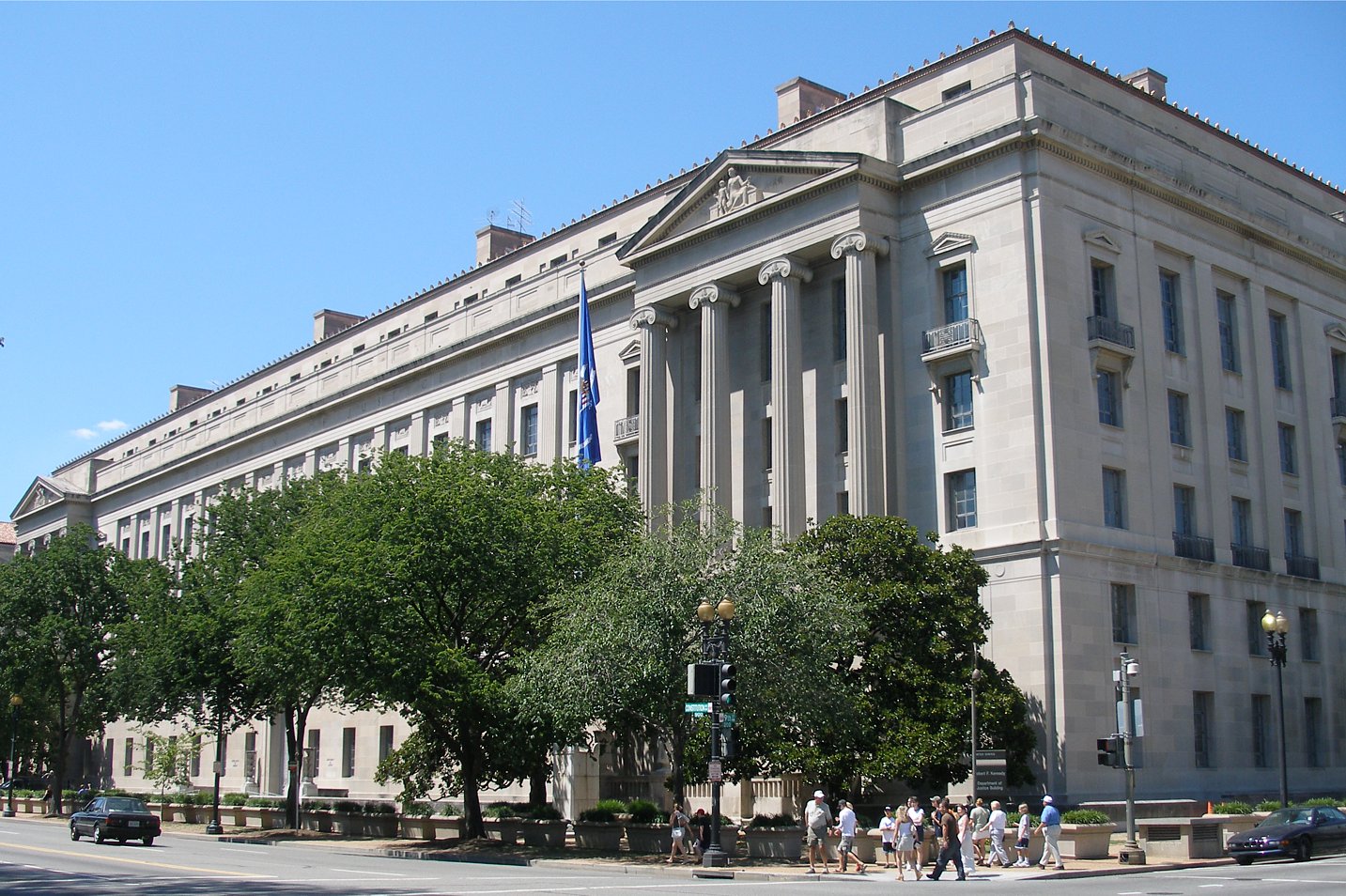Back to Threat-Level Orange and the Need to Update the National Terrorism Advisory System
When President Obama took office in 2009, one of his first tasks was directing the review and reform of the Homeland Security Advisory System (HSAS). President Bush implemented the color-coded alert levels shortly after September 11th to better communicate with the public regarding potential and emerging threats. But instead of meaningfully informing citizens, the stoplight chart of doom quickly became a punchline on late-night television, with David Letterman and Jon Stewart taking regular aim.
Published by The Lawfare Institute
in Cooperation With

When President Obama took office in 2009, one of his first tasks was directing the review and reform of the Homeland Security Advisory System (HSAS). President Bush implemented the color-coded alert levels shortly after September 11th to better communicate with the public regarding potential and emerging threats. But instead of meaningfully informing citizens, the stoplight chart of doom quickly became a punchline on late-night television, with David Letterman and Jon Stewart taking regular aim. Obama’s replacement to HSAS, the National Terrorism Advisory System (NTAS), never occupied the same place in pop culture consciousness, but it has fallen victim to some of the same problems. And, with the dawn of a new administration, it may be time to revisit NTAS and consider ways that DHS can improve communication with the public regarding national security threats.
It is worth examining how we got here, to determine how we might do better.
September 11th and implementation of HSAS including problems/criticism
Following the September 11th attacks, the Bush Administration sought to implement a better way for the government to communicate with citizens and public safety officials on emergent and potentially threatening situations. This effort led to HSAS which the President created in March of 2002, a full year before DHS was even formed. At its inception, the Attorney General administered any HSAS actions, until DHS was formally created in January 2003.
On its face, HSAS seemed like a step in the right direction after an event like September 11th. There were so many false reports of rogue planes and car bombs that no one knew what the actual truth or extent of the threat was. This left the public, including local police departments, unsure if a threat had dissipated. HSAS was intended to be a system for the federal government to communicate broadly regarding the threat level, without having to divulge specific information which might compromise national security or intelligence sources and methods.
While well-intentioned, over time the HSAS system became less of a method of communicating with the public and more of a bureaucratic tool to lend the appearance that action was being taken without actually addressing problems. At the start of the Obama Administration a DHS Task Force requested comments from relevant stakeholders on the effectiveness and utility of the original system. Among a whole host of criticisms and suggestions, the report pointed out that changes in the HSAS were not linked to other similar systems like the Defense Readiness Condition (DEFCON), Force Protection Condition (FPCON), Continuity of Government Readiness Condition (COGCON) or the Maritime Security Condition (MARSEC). Further, and perhaps most importantly, the report highlights that no written, objective criteria existed that delineate when the HSAS level would change. The lack of predictability in the system undermined its utility to the public and is at least in part what led to its replacement.
Implementation of HSAS
The lack of clear criteria left open the possibility for the Secretary of Homeland Security to change the HSAS level for political reasons—a charge that was raised in the run up to 2004 Presidential Election. In its history, the HSAS saw a dozen or so changes, and was only elevated to red, the highest level, once and that only pertained to flights destined for the U.S. from the UK for a three day period in August 2006. Many of the changes coincided with events like the September 11th anniversary or the Hajj or terror attacks that took place elsewhere in the world. None of the alerts offered much detail nor did they provide the public or local authorities with any actions to take in order to help mitigate a threat. Despite that fact that “Guarded” and “Low” risk levels existed on the HSAS chart, because they were never used, a sense of high-alert fatigue set in, undermining the purpose of the system.
Rolling out NTAS
DHS Secretary Janet Napolitano retired the HSAS and rolled out the National Terrorism Advisory System (NTAS) in January 2011. The NTAS was designed to more effectively communicate information about terrorist threats by providing timely, detailed information to the American public. The new system outlined two products that could be released, an alert for an elevated threat or an alert for an imminent threat. “Elevated” alerts would warn of a “Credible Threat” against the U.S. and an “Imminent” alert would warn of an impending threat.
The merits of the new system were debated, for example when no alert was issued following the May 2011 killing of Osama bin Laden despite widespread speculation about retaliatory attacks. But a number of elements were certainly marked improvements to the system. First, all bulletins and alerts would include information on the type of alert, as well as practical steps that could be taken and how to stay informed. Equally important was the requirement that all bulletins and alerts specify a duration or sunset date. The Secretary could renew an alert or bulletin, but a warning could not persist without additional review. Still, gaps emerged in instances where threats were not deemed worthy of alerts, but a nervous public still clamored for information, as was the case after bin Laden was killed. And like the HSAS system, there were no clear triggers for alerts so the system remained objective and opaque.
Past and Future Evolution of NTAS
In December 2015 Homeland Security Secretary Jeh Johnson announced further reforms of the NTAS noting that it was time for the system to evolve in light of the threat that homegrown extremists posed as Americans and others Westerners traveled to Syria to fight in the civil war there. The most notable change was the addition of a “Bulletin” to the two alerts. The new bulletins were designed to allow the Secretary to communicate critical information that may not necessarily indicate a specific threat. Like the alerts, bulletins have a sunset or expiration and similarly lack a discrete or specific creation mechanism or trigger.
While the new communication tool is useful on its face, the lack of specificity over time has resulted in similar levels of confusion as surrounded the HSAS color alerts. On the day Secretary Johnson announced that system’s latest version, he also issued the first bulletin which included a vague notice about a changing global threat environment consisting of self-radicalized threats, with a 6-month duration. In June, the bulletin was renewed for another five months. And on November 15 of this year, the same bulletin, with its vague pronouncements and directives, was once again renewed through May of 2017. The color swatches may be gone, but the public is no more informed regarding actual threats. The public will ultimately ignore unending warnings which provide no tangible information; the net result does nothing to promote resilience in communities and instead erodes public trust in communications from DHS and local authorities. Fortunately, steps can be taken to improve the process and build more resilient communities.
It is important to acknowledge that Secretaries Napolitano and Johnson deserve credit for maturing and improving this critical tool. As terror threats evolve, one crucial countermeasure is functional communication with the public. To that end, both the initial creation of HSAS under President Bush and the subsequent updates to NTAS should be lauded. But the next phase of evolution requires DHS to provide more information in bulletins and alerts. For example, if warning of a broad concern about self-radicalizing youth, DHS should outline specific indicators of a problem and target the bulletin to schools, recreation centers, and other communities likely to spot warning signs. And artificial expiration dates may not serve a purpose if bulletins are cast as general outreach from DHS under the NTAS rubric.
Additionally, there should be more transparency into the decision making process for when and how alerts and bulletins are issued. A desire for clarity should not lead to a rigid system of triggers that diminish discretion and ultimately usefulness of warning programs. But goals of flexibility and transparency could both be served so the public better understands how a Secretary arrives at a decision. This transparency supports credibility, meaning the public will be more inclined to trust the process, heed the recommendations, and be resilient in the face of the respective threat.
The NTAS should be views as a process, and not as a product or an end. The needs for communication change over time, just as public safety issues evolve. Each successive DHS Secretary has further developed this process and Secretary Johnson’s successor should likewise seek to keep this necessary tool from becoming obsolete. If America wants to maintain resilient communities, DHS needs to communicate clearly with the American public and the State and Local authorities that are the first line of defense.




